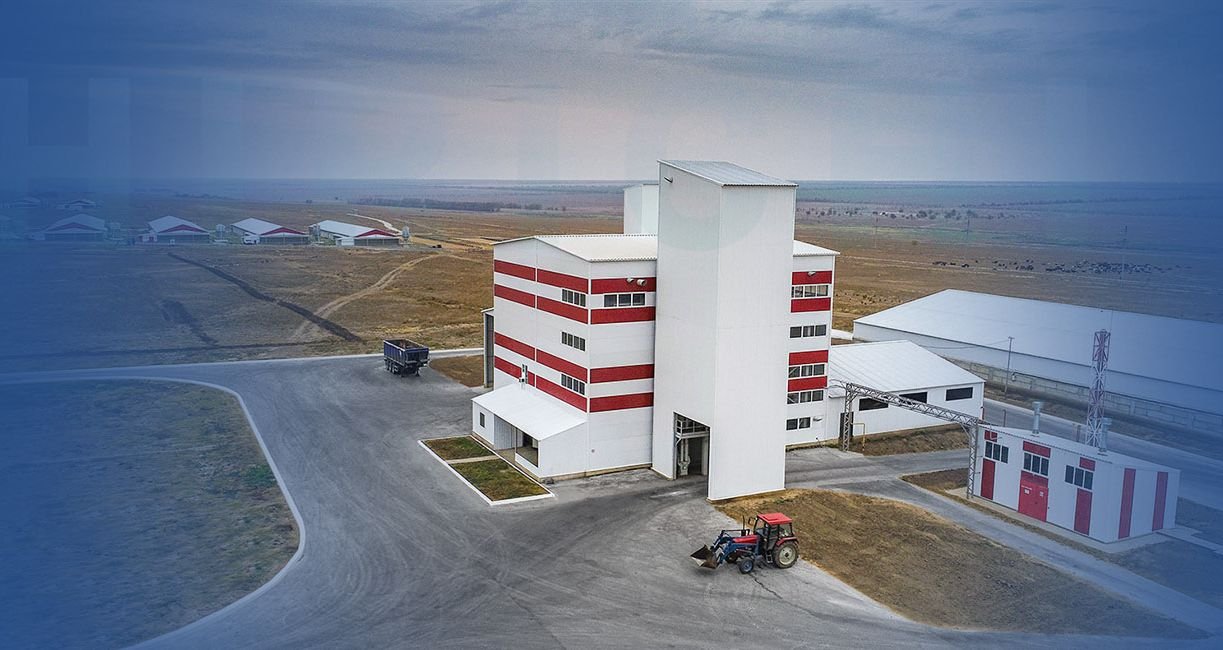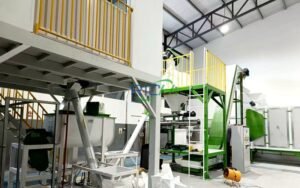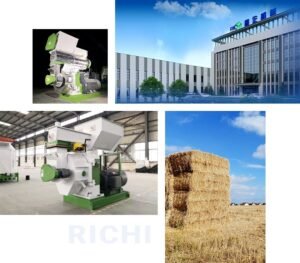
An 80 tons per hour (t/h) complete feed mill plant represents a significant investment in the animal feed industry, with its high production capacity offering both opportunities and challenges in terms of sales revenue. This article explores how the substantial production capacity of an 80t/h feed mill plant influences its sales revenue and the strategies that can be employed to maximize financial returns.
Production Capacity Overview
An 80t/h feed mill plant operating for 16 hours a day, 300 days a year, has a theoretical annual production capacity of:80t/h × 16 hours × 300 days = 384,000 tons per yearThis massive production capacity has several implications for sales revenue:
- Volume-Based Revenue Potential
The high production capacity of an 80t/h plant provides the potential for substantial sales revenue based on sheer volume. Assuming an average selling price of $300 per ton of feed, the theoretical maximum annual revenue could reach:384,000 tons × $300/ton = $115,200,000This figure represents the upper limit of revenue potential, assuming full capacity utilization and consistent pricing.
- Market Share and Competitive Advantage
The ability to produce such large volumes of feed allows the plant to capture a significant market share. This can lead to:
- Economies of scale in production, potentially allowing for more competitive pricing
- The capacity to meet the demands of large-scale customers, such as major livestock operations or feed distributors
- Flexibility to produce a diverse range of feed products to serve various market segments
These factors can contribute to increased sales revenue by attracting more customers and potentially commanding premium prices for certain specialized feed products.
- Capacity Utilization Challenges
While the high production capacity offers significant revenue potential, it also presents challenges in terms of capacity utilization. Operating at full capacity is crucial for maximizing revenue and achieving optimal cost efficiency. However, several factors can affect capacity utilization:
- Market demand fluctuations
- Seasonal variations in feed requirements
- Competition from other feed producers
- Economic conditions affecting the livestock industry
To address these challenges and maintain high capacity utilization, feed mill operators may need to:
- Implement flexible pricing strategies to stimulate demand during low seasons
- Diversify product offerings to cater to different market segments
- Explore export opportunities to expand the customer base
- Develop long-term contracts with large customers to ensure stable demand
- Quality Control and Consistency
Maintaining consistent quality across such large production volumes is crucial for sustaining sales revenue. High-quality feed can command premium prices and foster customer loyalty. Investing in advanced quality control systems and processes becomes even more critical at this scale of production.
- Cost Management and Pricing Strategies
The large production capacity allows for potential cost savings through:
- Bulk purchasing of raw materials
- Efficient use of labor and equipment
- Reduced per-unit overhead costs
These cost efficiencies can be leveraged to:
- Offer competitive pricing to capture market share
- Maintain higher profit margins
- Invest in marketing and customer relationship management to drive sales
- Market Expansion Opportunities
The high production capacity of an 80t/h plant provides opportunities for market expansion, which can significantly impact sales revenue:
- Geographic expansion: The ability to supply feed to wider geographic areas
- Product line expansion: Capacity to produce specialized feed formulations for different animal species or life stages
- Export markets: Potential to enter international markets, leveraging the high production capacity to meet large-scale export demands
- Inventory Management and Cash Flow
The high production capacity necessitates efficient inventory management to avoid:
- Excess inventory tying up working capital
- Spoilage of feed products
- Stockouts leading to lost sales opportunities
Balancing production with demand forecasts is crucial for optimizing cash flow and maintaining steady sales revenue.
- Marketing and Sales Strategies
To fully leverage the high production capacity and maximize sales revenue, robust marketing and sales strategies are essential:
- Developing a strong brand identity to differentiate from competitors
- Implementing targeted marketing campaigns to reach large-scale customers
- Offering value-added services such as nutritional consulting or custom feed formulations
- Establishing a dedicated sales team to manage key accounts and explore new market opportunities
- Technological Advancements and Efficiency
Investing in cutting-edge technology for an 80t/h plant can enhance production efficiency and quality, potentially leading to:
- Reduced production costs
- Improved feed quality and consistency
- Development of innovative feed products
These factors can contribute to increased sales revenue through higher margins, premium pricing, and expanded market opportunities.
- Sustainability and Regulatory Compliance
Operating a high-capacity feed mill requires strict adherence to environmental regulations and sustainability practices. While compliance may incur costs, it can also:
- Enhance the company’s reputation, potentially attracting environmentally conscious customers
- Open up markets with strict regulatory requirements
- Reduce the risk of costly regulatory violations that could impact production and sales
Related post: commercial feed mill
Conclusion
The 80t/h production capacity of a complete feed mill plant offers immense potential for generating substantial sales revenue. However, realizing this potential requires careful management of various factors, including capacity utilization, quality control, cost management, market expansion, and strategic marketing efforts.To maximize sales revenue, feed mill operators must:
- Ensure high capacity utilization through diversified product offerings and market expansion
- Maintain consistent quality to command premium prices and foster customer loyalty
- Leverage cost efficiencies to offer competitive pricing or maintain higher profit margins
- Implement robust marketing and sales strategies to capture and retain large-scale customers
- Invest in technology and innovation to improve efficiency and develop new product lines
- Manage inventory effectively to optimize cash flow and meet market demands
- Adhere to sustainability practices and regulatory requirements to enhance market opportunities
By effectively managing these aspects, an 80t/h complete feed mill plant can not only achieve high sales revenue but also establish itself as a dominant player in the competitive animal feed industry. The key lies in balancing production capacity with market demand, quality, and strategic business practices to ensure long-term profitability and growth.
For details please contact: pellet line
WhatsApp:86 138 3838 9622
Email:enquiry@richipelletmachine.com





